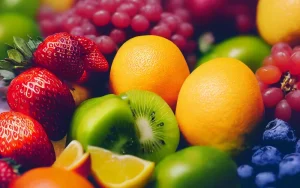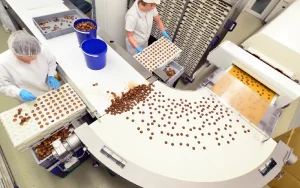How can you trust that the food you buy is safe and of high quality? Well, behind every product, there is a series of specialized processes that guarantee its quality and safety. We are talking about QA QC. What do these acronyms stand for and why should you take them into account?
Safeguarding the quality of food products, especially fruit purees, is vital for the consumer. Discover the role of QA QC.
QA QC: what is it about?
These terms are two key elements in the U.S. food industry:
- QA stands for “Quality Assurance” or quality assurance.
- QC stands for “Quality Control”.
They look the same, but what is their difference?
The fundamental distinction between QA QC lies in the following aspects:
- QA is dedicated to avoiding quality failures, while QC is oriented towards the identification of defects already present.
- QA is a methodology for managing quality. Thus, it seeks to ensure that manufacturing practices and procedures are designed in such a way as to produce a high-quality product. On the other hand, QC is a series of activities that focus on evaluating and confirming the quality of the finished product or service (Malyavko, 2022).
In other words, while QC acts reactively to detect faults already existing in the final product, QA takes a proactive approach to prevent imperfections, both before and during the manufacturing process (Escudero, 2023).
Key Factors in the Food Safety of Fruit Purees
Food safety with fruit purees is a comprehensive process comprising a number of key factors. These components, supported by QA QC, ensure that products meet quality standards and are safe for consumption (Escudero, 2023).
Here are a few of the things to watch out for in food manufacturing:
- The quality of the raw material must be based on knowledge of the origin of the fruit. It must also have certifications that validate the quality of the fruit, such as organic standards and good agricultural practices.
- Processing. Especially in pasteurization and sterilization. This is very important for food preservation. Pathogens could be eliminated and proper acidity and pH levels could be maintained.
- Quality control through microbiological and sensory tests.
- Storage and distribution monitoring through uninterrupted cold chain and expiration date.
- Regulatory compliance with FDA/USDA parameters.
- Verification of labeling that complies with legal requirements. Must provide all information to consumers such as ingredients and allergens.
- Traceability of each point in the process with reliable and visible product records.
- Periodic audits of the food safety and quality management system.
In summary, quality control (QC) and quality assurance (QA) play several important roles in the production and distribution of high-quality products. These processes will make the difference between a safe and a risky product. Therefore, we invite you to keep these two quality standards in mind when choosing your products.
Bibliographic references
- Escudero, E. (2023). Evolution of Food Quality Assurance Systems.
- Malyavko, V. (2022). Quality assurance versus quality control.




